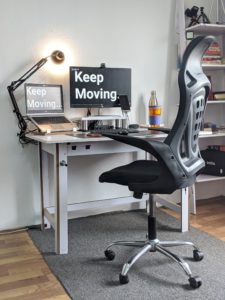Designing Your Office with Sustainability and Ergonomics in Mind
 Sustainability is gaining momentum with consumers across the globe, with research by Nielsen indicating that “brands that are able to strategically connect (sustainability) to actual behavior are in a good place to capitalize on increased consumer expectation and demand.” Businesses are embracing a wide range of measures ranging from adopting energy- and water-saving measures right through to utilizing sustainable packaging, but those with a commitment to eco-friendliness are embracing this quality in office design as well.
Sustainability is gaining momentum with consumers across the globe, with research by Nielsen indicating that “brands that are able to strategically connect (sustainability) to actual behavior are in a good place to capitalize on increased consumer expectation and demand.” Businesses are embracing a wide range of measures ranging from adopting energy- and water-saving measures right through to utilizing sustainable packaging, but those with a commitment to eco-friendliness are embracing this quality in office design as well.
The Link between Ergonomics and Sustainability
Ergonomists have an important role to play in designing for sustainability. Sandars and McCormick (1992) stated that ergonomics can help identify important issues in design and scientifically evaluate, verify, and contribute to the sustainability of a design. Ergonomists can work with designers to boost safety, productivity, and sustainability of systems. In office spaces, designers need to be aware of how people work and utilize a space to design everything from lighting features to furniture, orientation, and heating systems, in a sustainable, purposeful manner.
Effecting Change
Businesses with existing interior design features can embrace sustainability in major ways (via major renovations) or through a case-by-case approach. This especially applies to aspects such as furniture—including desks, chairs, and computers. Ergonomic chairs usually have a specific set of features such as good back and neck support, adjustable height, and (in the case of some industries, such as those involving artwork) adjustable armrests. Ergonomic desks, meanwhile, are large enough to work on comfortably, with standing desks being considered particularly ergonomic. This is the case because these desks help battle the sedentary lifestyle while also keeping musculoskeletal problems at bay. They enable users to work at the right height so that their neck and shoulder muscles are not strained and their head is kept straight instead of bending forward. Sustainable desks can be sourced in materials such as bamboo, which has naturally renewing properties and does not require pesticides and chemicals to grow or harvest.
Design Renovations
Companies wishing to invest in major renovations (as well as those building a new office from scratch) should take key features into account at the design stage. These include the use of sustainable materials, the design of spaces that maximize the entry of natural light, and the reliance on renewable energies (such as solar and wind energy). The direct and indirect impacts of chosen materials should be studied, as well as the use and future removal and disposal/reuse/recycling of construction materials and supplies. Visionary companies can look into innovative materials such as mycelium (the non-fruiting part of a mushroom that is already being used in sustainable packaging and construction). Designers can also incorporate elements from the biophilic design movement, which seeks to blur the divide between interior and exterior spaces.
Sustainability is fast becoming a mark of forward-thinking companies. Environmental responsibility extends to everything from supply chain management to packaging and even office design. Companies wishing to commit to sustainability can take more intensive and smaller measures—including knocking down walls to maximize the entry of light, investing in sustainable ergonomic furniture, and incorporating key elements of the biophilic design philosophy.


Sorry, the comment form is closed at this time.